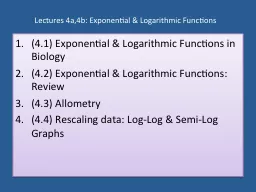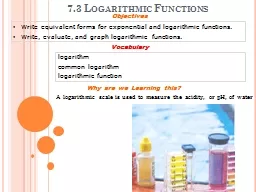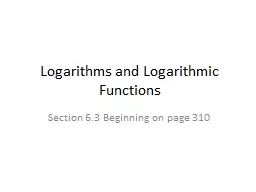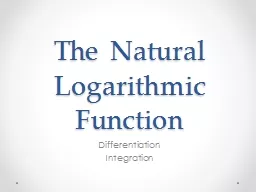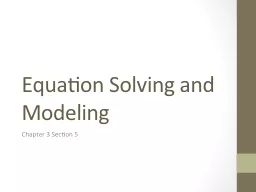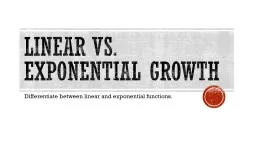PPT-Lectures 4a,4b: Exponential & Logarithmic Functions
Author : conchita-marotz | Published Date : 2016-07-02
41 Exponential amp Logarithmic Functions in Biology 42 Exponential amp Logarithmic Functions Review 43 Allometry 44 Rescaling data LogLog amp SemiLog Graphs Recall
Presentation Embed Code
Download Presentation
Download Presentation The PPT/PDF document "Lectures 4a,4b: Exponential & Logari..." is the property of its rightful owner. Permission is granted to download and print the materials on this website for personal, non-commercial use only, and to display it on your personal computer provided you do not modify the materials and that you retain all copyright notices contained in the materials. By downloading content from our website, you accept the terms of this agreement.
Lectures 4a,4b: Exponential & Logarithmic Functions: Transcript
Download Rules Of Document
"Lectures 4a,4b: Exponential & Logarithmic Functions"The content belongs to its owner. You may download and print it for personal use, without modification, and keep all copyright notices. By downloading, you agree to these terms.
Related Documents

